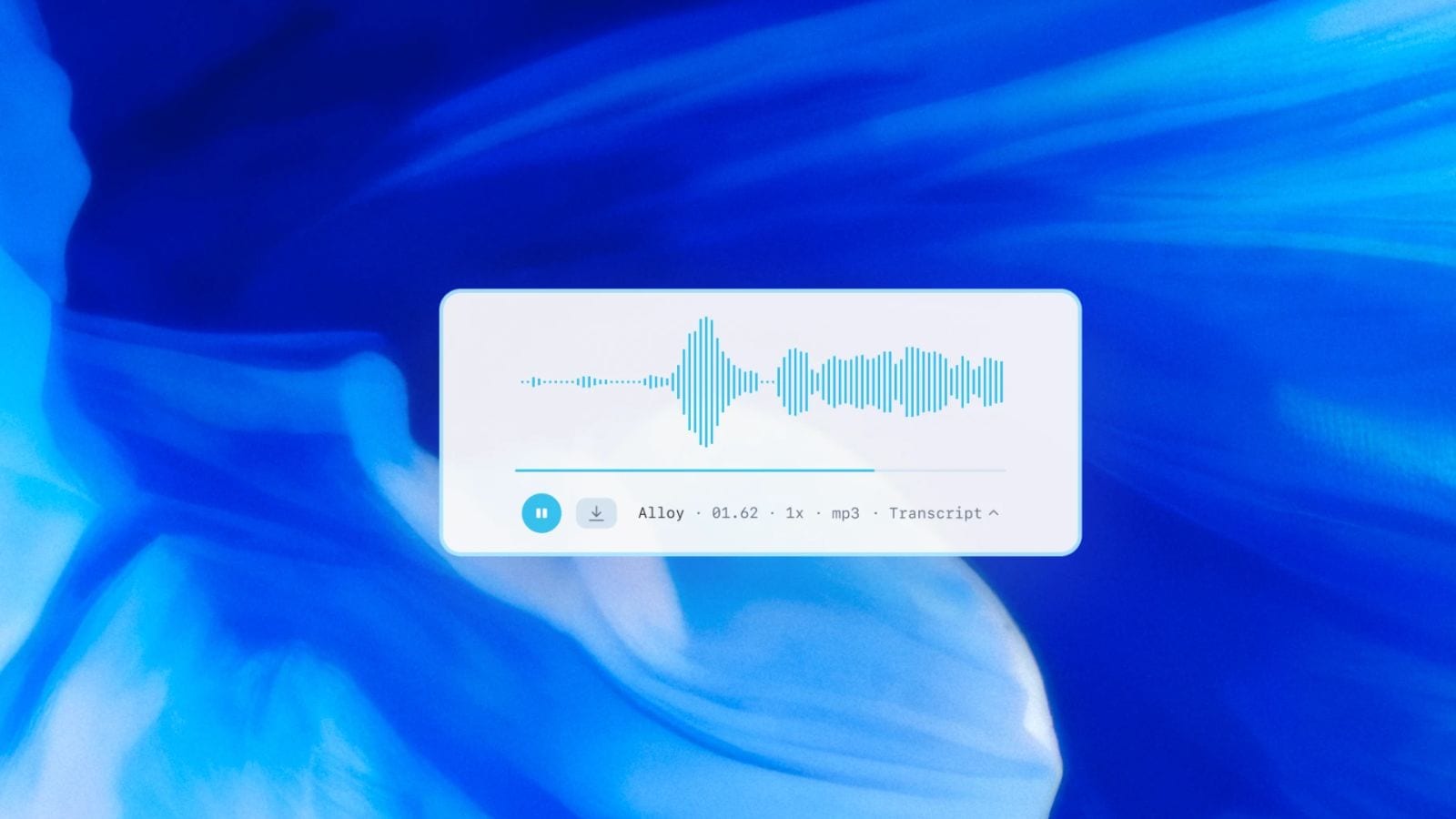Let's Master AI Together!
OpenAI Unveils New Audio Models to Redefine Voice AI with Real-Time Speech Capabilities
Written by: Chris Porter / AIwithChris

*Image Source: Indian Express*
Revolutionizing Voice Interaction with AI
The landscape of voice AI is undergoing a monumental transformation as OpenAI introduces its latest audio models tailored to redefine real-time speech capabilities. At the forefront of this innovation are the flagship models: GPT-4o Transcribe, GPT-4o Mini Transcribe, and GPT-4o Mini TTS. Each model is designed with advanced features aimed at expanding the possibilities of speech recognition and text-to-speech technology, positioning them as game-changers in effective communication.
With an increasing demand for seamless interactions between humans and machines, OpenAI's new audio models are set to enhance the way we use voice technology in everyday applications. Implementing a robust 'agentic' vision, these tools empower automated systems to perform tasks independently, thereby simplifying user experiences across various platforms.
Introducing the Flagship Models
The GPT-4o Transcribe and GPT-4o Mini Transcribe represent the pinnacle of speech-to-text innovation, addressing challenges that have historically hindered voice recognition systems. For instance, they excel even in noisy environments or when processing speakers with strong accents or fast-paced speech. This robustness marks a significant leap forward compared to predecessors like Whisper V3 and current offerings in the market, as proven through rigorous benchmarking that highlights notable reductions in word error rates.
Real-time applications such as customer service support and live transcription services stand to benefit enormously from this enhanced transcription accuracy. Users can expect fewer misunderstandings and a more efficient communication flow, elevating the reliability of voice-driven technology.
Enhancements in Text-to-Speech Capabilities
Moreover, the GPT-4o Mini TTS model introduces a refreshing approach to text-to-speech, offering developers unprecedented steerability in voice interactions. Rather than offering a one-size-fits-all solution, this model enables customization of speech output based on specific contexts or tones. Whether it’s adopting the dramatic flair of a mad scientist or the soothing cadence of a mindfulness instructor, flexibility is embedded into the design, allowing applications to deliver personalized user experiences.
This meticulous attention to contextual voice adjacent not only improves user immersion but also has significant implications for accessibility, making technology more inclusive for individuals with diverse needs.
Chained Architecture Approach: A New Era of Modularity
Central to the effectiveness of these new models is the innovative chained architecture they employ. This approach ensures that speech is first transcribed into text, subsequently processed through a large language model (LLM), and finally transformed back into high-fidelity speech. This modularity renders developers greater control and transparency over every step of the voice interaction process, creating opportunities for more tailored and reliable performance.
In practical terms, this means that developers can modify the interaction chain based on user feedback or changes in context, fostering a more dynamic interaction. The chained architecture could lead to breakthroughs in various sectors, including education, where personalized learning experiences can be crafted through customized voice interactions.
The Future of Voice AI
The advancements embedded in OpenAI's latest audio models herald a new chapter for voice AI. By marrying high accuracy in speech recognition with customizable text-to-speech capabilities, these models promise to give rise to an era of more natural, engaging interactions with technology. The potential applications are virtually limitless, traversing domains from customer service to personalized virtual assistants.
In conclusion, as we move forward into a future defined by AI advancements, the deployment of these sophisticated audio models will likely reshape our interactions with machines, paving the way for greater efficiency and more personalized communication methods.
Harnessing Voice AI in Real-Life Applications
Exploring the possibilities that OpenAI's new models offer reveals the breadth of their potential applications. A prime area where these models can exert substantial influence is customer support. The ability to achieve nearly flawless speech recognition and context-aware speech synthesis means that voice assistants can handle a range of customer queries with greater effectiveness. Users can enjoy smoother conversations that mirror human-like interactions, moving beyond the days of frustrating robotic responses.
Additionally, sectors like healthcare could find significant utility in these innovations. For example, electronic health records (EHRs) could be populated using real-time speech inputs, enhancing the efficiency of medical documentation while reducing the administrative burdens on healthcare providers. The implications for telemedicine, where accurate and contextual dialogue is vital, are also tremendous, promoting better patient-doctor communication.
Education Reimagined with Advanced Voice AI
Evidence suggests that personalized learning experiences contribute positively to student outcomes. With the introduction of advanced voice AI capabilities, educational tools can elevate the interactive quality of learning. Instructors could utilize the steering capabilities of TTS models to present information in varying tones or styles, capturing student interest and catering to different learning preferences.
Moreover, students with learning disabilities or those who are non-native speakers of a language stand to benefit immensely from these technologies. Customized voice interactions can not only enhance engagement but also ensure that content is more accessible, thereby supporting a diverse range of learning experiences.
A Working Ecosystem for Developers
The introduction of OpenAI's new audio models is not simply a technical leap; it fosters an entire ecosystem for developers. With modular implementations and enhanced control over voice outputs, developers are empowered to innovate without the limitation of conventional AI models.
The focus on a structured yet flexible interface will likely stimulate fresh ideas, fueling new applications that leverage real-time voice interaction. From entertainment to content creation, the iterative potential is vast. As developers harness these capabilities, the technology can continue to evolve, adapting to the needs and preferences of users.
The Broader Implications of Voice AI
With the advent of these sophisticated audio models, we cannot ignore the broader implications for society. The increased reliance on voice AI may produce new ethical considerations regarding privacy and data handling.
Furthermore, as voice interaction transgresses into everyday tasks, the potential for misuse or unintended consequences emerges, necessitating a robust framework that addresses these challenges. OpenAI's commitment to responsible AI adoption and continued research on ethical aspects will be crucial in guiding the integration of these technologies.
Final Thoughts
As OpenAI releases its groundbreaking audio models, the possibilities for reimagining voice AI are limitless. With real-time speech capabilities enhancing our interaction with technology, the landscape is poised for changes that prioritize both accuracy and personalization. The road ahead is bright, and as developers and users embrace these innovations, we stand at the cusp of a new era in voice interaction.
To learn more about voice AI and explore more about OpenAI's advanced audio models, visit AIwithChris.com for comprehensive insights and expert resources.
_edited.png)
🔥 Ready to dive into AI and automation? Start learning today at AIwithChris.com! 🚀Join my community for FREE and get access to exclusive AI tools and learning modules – let's unlock the power of AI together!
